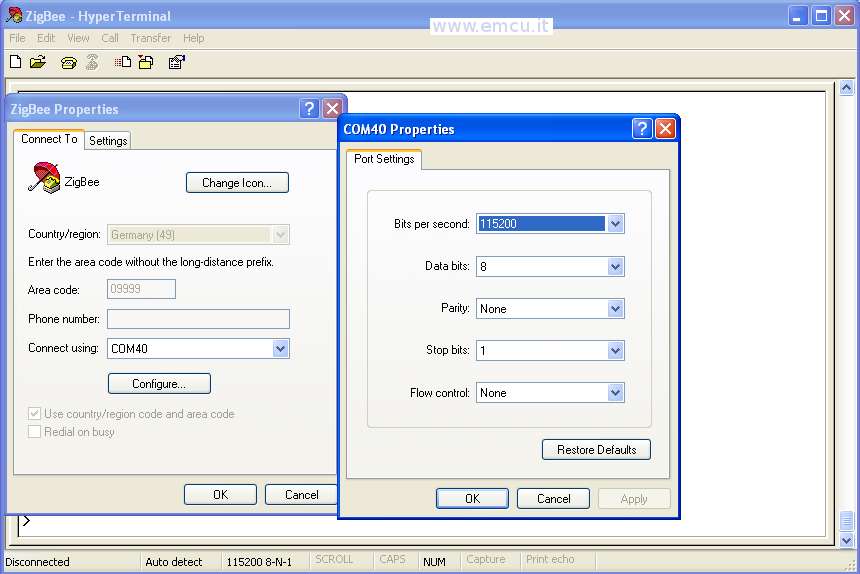
- #WINDOWS HYPERTERM NEED DTS SERIAL#
- #WINDOWS HYPERTERM NEED DTS CODE#
- #WINDOWS HYPERTERM NEED DTS PLUS#
- #WINDOWS HYPERTERM NEED DTS FREE#
use something like:Ĭase comEventBreak ' A Break was received.Ĭase comEventRxOver ' Receive buffer overflow.Ĭase comEventTxFull ' Transmit buffer full.Ĭase comEventDCB ' Unexpected error retrieving DCB]Ĭase comEvRing ' Change in the Ring Indicator.Ĭase comEvReceive ' Received RThreshold # ofĬase comEvSend ' There are SThreshold number ofĬase comEvEof ' An EOF charater was found inĪlso ensure that you have Threshold set to 1 otherwise you may endup with data in the buffer not coming through. You can always close the port in this event when you know you have all the data. You also have more control, becaue it gives a status back and so you can handle any errors accordingly. The only sure way is to make use of the on_comm event that automatically get's fired as soon as any data comes back through the Com Port. I found that most times this method worked fine but occassionally it blew up big time. I did this when I first started out with the comm control and didn't understand it. Sorry to disagree with you ron, but using a doEvents and Do loop is totally the wrong approach for the Comm control. My email A great book for this purpose is Automating Science and Engineering Laboratories with Visual Basic Authors Mark F. Sale.If you send me your email I will email you a copy of exe
#WINDOWS HYPERTERM NEED DTS FREE#
Its is free the only draw back is you can't use it in Apps that you
#WINDOWS HYPERTERM NEED DTS PLUS#
Where you can see th TD Pin output as well as RD Input in Dec and Hex plus it monitors all handshaking signals DTS. None of the problems mscomm1 has and it also has a port monitor I have a better ActiveX Control that is easy to use and presents Rdata = Mid$(InBuffer, EOL-2) " the EOL-2 Eliminates the CRLF unpritable characters
#WINDOWS HYPERTERM NEED DTS CODE#
Where 1 is channel #,data CRLF and i look for LF in my vb code Like this for example (1 space,space,data value(decimal)crlf) If set to a high value ie 256 then you will get 256 CommEventsīut you might lose data also. Low and are using comInputModeText then it might not be raised It seems simple a few of the properties present problems I use the MSComm control in a few of my projects and while You could also look at using the OnComm event, probably comEvReceive, to detect when data is received. I set MSComm's InputLen =1, and used HandShaking=2. I also had a cancel button which would set EndReceive to true so the user can stop the loop. Maybe your equipment sends an EOF or you know that a certain number of characters are returned. In the above example, the letter N is used to indicate the end of the data. Loop Until Temp$ = "N" Or EndReceive = True I have always used a Do Loop with the DoEvents command so it does not tie up system resources:
#WINDOWS HYPERTERM NEED DTS SERIAL#
If you have to change any of the serial port properties, the port myst be closed.


When you are all finihsed, you should close the port:

You can use the following to send a single character, or several characters: There is actually a lot of good information on the MSComm control in the VB help files, but it takes a lot of reading and testing code. Unfortunately, most VB programmers never do anything with the serial port, so you're stuck with me and maybe a few others. I can communicated through a direct com1 connection in hyperterminal, and I can see the results when a command is rejected by the parser, but I can make it work in VB with the MSComm control. The best way to detect an error is to watch the echo, and if it is not the same character, then you need to go back and send each character of the command again from the beginning. The parser also resets after sending an error. If you need to reset the parser, you can send a "Q" between 1 and 3 times. When the parser sees a proper and complete command, it resets itself for the next command. The commands that are required are between 3 and 6 characters long. If the character is not legal, it will send some other character (various error sequences). If a recognized legal character is sent to the device, it will echo it back. The device is an echo-back serial device with a command parser that acts very squirrely. I have a laboratory device that I am trying to write an interface to.


 0 kommentar(er)
0 kommentar(er)
